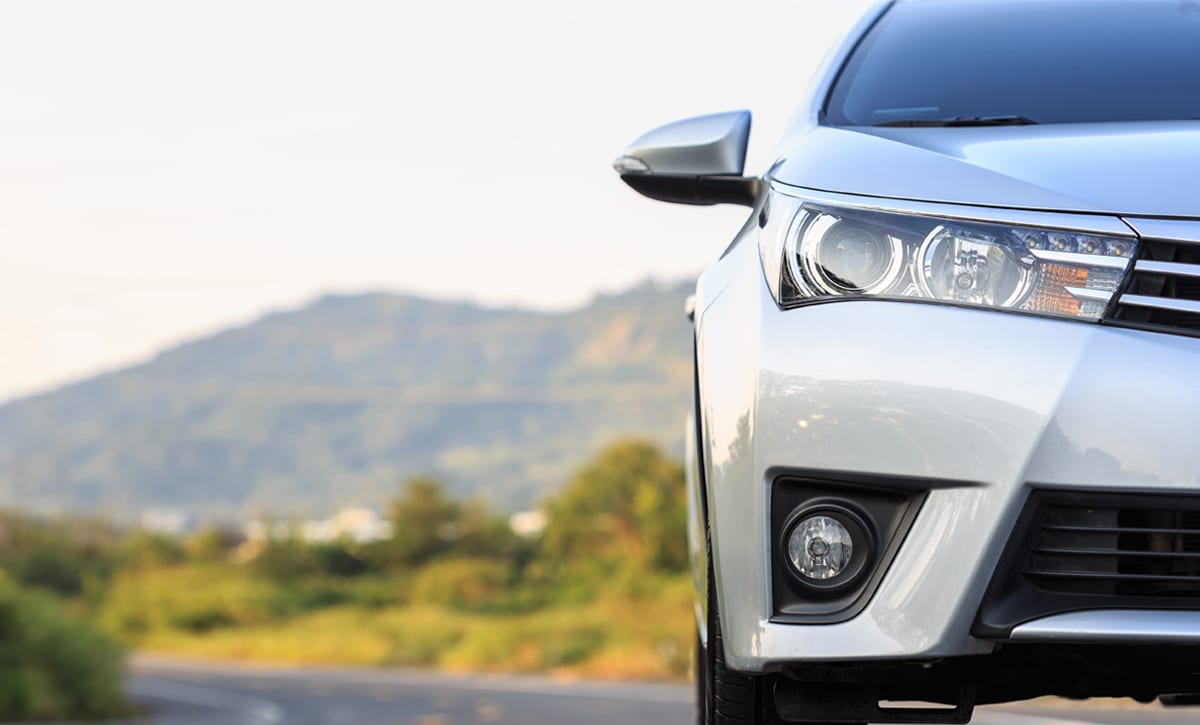How digital tech will change the buying journey for homes and cars

In 2020, consumerism saw the largest shift to digital purchasing in a decade, with online sales growing 46% in 2020, driven by the need to safely buy and sell goods. But even pre-pandemic, the preference to shop online was already becoming the norm, demonstrated by a steady global increase in digital buyers. The biggest investments people make in their lifetime, homes and cars, have always relied heavily on physical interactions at every stage of the buying journey. But as e-commerce becomes more ingrained in both our lives and, indeed, our devices, consumers will migrate from traditional, in-person methods of browsing and buying, even for these big-ticket items.
Consumers now actively choose to peruse and purchase everything from fashion and groceries, to tech and holidays online. Although some brands are a little late to the digital transformation party, waves are now being made in the real estate and automotive industries, as technology filters into the buying journey of these high value items. As momentum picks up, here’s what we predict for the future commerce journey…
AI chatbots foster a personal search
The amount of information online is continually growing and, without assistance, online searches can seem endless. Consumers have become accustomed to relying on intelligent technology to refine searches and access the information they are looking for quickly. With 89% of shoppers wanting to use instant messaging to communicate with brands and 66% favouring messaging over any other communication channel, chatbots are the way forward.
Driven by artificial intelligence (AI), intelligent chatbots can help companies save time and money by digitising customer interactions; capturing customer queries and sharing relevant, instant information to address their needs. Having already gained strong levels of adoption, and a predicted global market size of $1.3 billion by 2024, chatbots are evolving to have much more human-like characteristics; helping to establish deeper connections between brands and consumers and create more meaningful experiences.
As chatbots learn to be more “human,” their abilities to answer more complex questions and make pointed suggestions to the consumer also grows. For the real-estate and automotive sectors, instead of answering singular questions about size, colour, features, rooms or location, chatbots will participate in a dialogue to paint a real-life picture of the agent or dealer and their products. This conversational enhancement will allow chatbots to make accurate suggestions, while using the information from customer conversations to gently influence a sale. Instead of overwhelming the buyer with information they may not need or want, chatbots can connect the consumer to content, images and video that sell the lifestyle that accompanies the home or car.
Chatbots have a pivotal role to play in the research stage of home and car buying. Furthering discovery through intelligent conversations and engaging the customer with pointed suggestions ultimately meets the potential buyers’ needs. From locating relevant properties to finding the perfect car to test drive, the evolution of AI will continue to shape the way consumers browse online.
AR delivers an immersive experience
Refining the search is only the halfway point to closing a sale. Producing relevant suggestions isn’t going to foster online sales alone, as the home and car buyers of the future will still want to view the product before making a significant, long-term investment.
Virtual and augmented reality (VR/AR) lend themselves perfectly to creating immersive experiences without the customer having to leave their home. The technology seems to be evolving from a trend to the new normal, with the market being predicted to reach £80 billion by 2025. There’s also appetite from consumers, with 80% of online shoppers and 60% of mobile shoppers stating that new technologies and innovations improve their experience.
The forecast for the future suggests AR and VR will be the go-to tools for first stage viewing of homes and cars. Both technologies have the ability to create all encompassing, customised experiences, assisting in the decision making process by delivering huge amounts of visual data instantly. Deliberating between options that once took hours or even days, can be reduced to minutes.
Today, real estate agents and automotive dealers are increasingly turning to this technology. By 2025, it is predicted that VR home tours will be the new standard of viewing for those entering the property market. DEPT® recently worked with BPD, the largest real estate developer in the Netherlands, to create an innovative digital service that enables customers to browse, customise and purchase homes online or through VR. Customer demand for the service was so high that leads doubled as a result of this solution.
In the automotive industry, audi, toyota, Hyundai and Kia are among the car manufacturers already using VR to answer questions about the location of controls and navigation, accessibility, space, look and feel before customers visit a dealership. Other companies are pushing technology even further, aiming to drive sales to strictly online channels. Volvo has plans to move all sales online by 2030, and Tesla is taking the VR experience to new heights by experimenting with sales without a showroom in Israel and accepting pre-orders via the internet.
While AR is not currently widely used in the real estate market, it certainly has its place. The technology can assist the decision making process by overlaying digital renderings on physical objects when viewed through a smartphone or device; converting non-visual information like building specs, market value and location to visual information. AR could also be used for home staging, allowing the consumer to realise the various options and combinations of features available, without having to visit multiple locations. At the same time, it can be a cost-saving measure for the seller. For car dealerships, full AR integration could mean a drastic reduction in the number of cars needed at a location, reducing expense on space and inventory.
For the consumer in either market, this means seeing the full potential of any car or property, either from the comfort of home or onsite. Toyota and jaguar land rover have capitalised on AR’s ability to create immersive experiences by providing customers a way to digitally “build” their perfect car and then view it from all angles. Ar has the ability to assist the decision making process and influence it by visually suggesting how a property or car can complement the buyer’s lifestyle.
Connected to convenience
After consumers have made their high value purchases, it is expected that the digital buying journey will continue to filter into their at-home and in-car experiences. Consumers demand convenience, as demonstrated by the growth of mobile and voice commerce. Voice is now used for 48% of web searches, and 1 in 5 consumers with smart speakers use it to buy products. By 2024, mobile commerce will account for 44% of online sales.
The convenience of in-home shopping will evolve to in-car shopping. Two thirds of drivers who already make online orders said they would do so more often if it was integrated in their cars; with in-car payments representing a potential $212bn business opportunity. Throughout the last six years, companies like Shell, GM, Jaguar and Hyundai have all worked towards connecting the digital wallet to in-car consoles for petrol payments, location of services and pre-ordering and pre-payment at drive-thru restaurants.
Connectivity will drive the car of the future. Voice connects to mobile, mobile connects to car, car connects to the internet; all of which streamlines consumers’ connection to commerce. As the idea of the connected car follows the path of the connected home, the car of the future will become the new digital wallet.
In the same way that digital technology is dominating the home and car buying process, it is further filtering into our in-home and in-car experiences. The buying journey for these high-value items will be completely overhauled in a matter of years, with consumers potentially expecting to start browsing new homes from their vehicles. Digital transformation will continue to pick up pace in these industries, as we’ve witnessed in others, and it is the brands that take heed of consumer trends now that will succeed in the long term.
More Insights?
View all InsightsQuestions?
Principal Digital Consultant, Design & Technology



